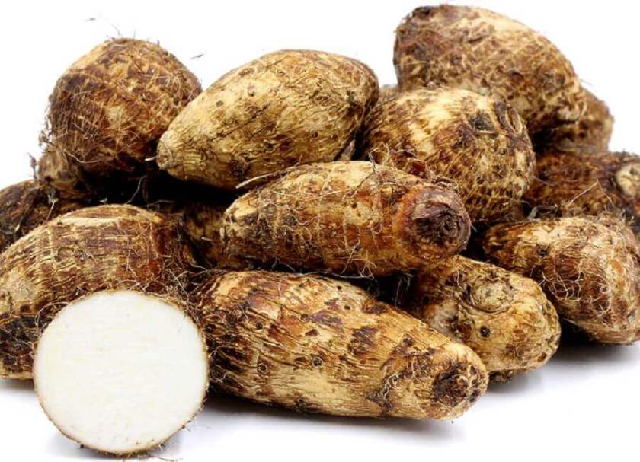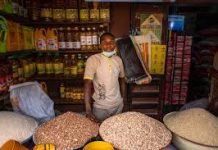Cocoyam, which is a traditional staple, tuber food in the country and regarded as ‘poor man’s food’ in many rural communities, is about to become a cash crop and create wealth for many local farmers, as the Manufacturers Association of Nigeria (MAN) says it has discovered that the tuber can be used as an alternative to sorghum in factories producing beer and other beverages.
The President of MAN, Dr. Frank Jacobs, who stated this through the Association’s Director, Corporate Communications, MAN, Mr. Ambrose Oruche, noted that this discovery came out of the collaborations that the body had with indigenous researchers while on the quest to increase local sourcing of raw materials.
He said the recent experience of manufacturers with foreign exchange scarcity had made it necessary to collaborate with the Research and Development institutions in search of local raw materials.
He said: “The recent dearth of foreign exchange which has technically hindered manufacturers from procuring essential raw materials that should keep the factories going, is a challenge that MAN and our members across various sectors in the manufacturing industry will be willing to throw at the researchers towards developing sufficient raw materials locally.”
He pleaded with government to stimulate industrial production through consistent patronage of locally made products.
Cocoyam (Colocasia and Xanthosoma spp) is a stem tuber and herbaceous perennial plant belonging to the Araceae family and constitutes one of the six most important root and tuber crops world-wide. Cocoyam is an important staple food in Nigeria and ranks third in importance after cassava and yam among the root and tuber crops cultivated and consumed. It also plays a significant role in bridging the food gap between the time of plenty and scarcity, with all the vegetative parts being used as food in one form or the other.
According to the National Root Crops Research Institute (NRCRI), Nigeria is the world’s leading producer of cocoyam with an estimated 10 million metric tons in 2016. This represents about 40% of the world’s cocoyam production figure (Food and Agriculture Organization (FAO), 2016).
Cocoyam, as a traditional crop, is consumed in all the 36 States of Nigeria, especially the South-East States like Anambra State, though it is generally regarded as poor man’s food. It is consumed in various forms – boiled, fried, pounded or roasted. It can also be processed into chips (achicha) which has long shelf life and provides food all year round, especially during lean planting season. Cocoyam leaves are also used as vegetable for preparing soup in various parts of the world.
Cocoyam corms are of great economic, social and nutritional importance to the people. The corms supply easily digestible starch and are known to contain substantial amounts of protein, vitamin C, thiamine, riboflavin, niacin and a significant amount of dietary fiber. Cocoyam is believed to be generally good for the body and has some medicinal values. Consumption of micronutrient rich food such as cocoyam is important for a strong immune system that helps the body to utilize protein, carbohydrates and other nutrients. Cocoyam (Taro) contains some calcium, vitamin C, vitamin E and B vitamins, as well as magnesium, manganese, copper and fiber which aids in the digestive process, makes elimination of stool easy and also helps in cancer prevention, according to experts.
Expansion in cocoyam production has the potential of bridging the widening demand and supply gap for the product, and enhancing the income and standard of living of the farmers, particularly the vulnerable group.
As population pressure on land continues to increase, the importance of cocoyam in ensuring household food security and industrial use should be given adequate recognition, and efforts to increase production of the crop through encouraging the adoption of modern production strategies and mitigation of production constraints such as climate change, drought, poor cultural practices among cocoyam growers, pest and disease infestations and lagging interest of youths in agriculture must be stepped up.















